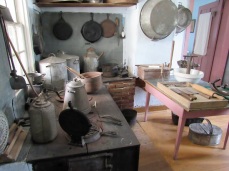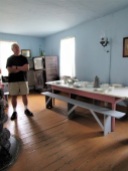Day 82, Friday, October 5, 2018
Hovenweep National Monument, Montezuma Creek, Utah
Hovenweep is one of the most amazing places I have ever been in my entire life. I know people say things like this a lot, but it is truly incredible. When people ask me what my favorite place on this trip was, Hovenweep always comes up at the top of the list. It is a hidden gem for sure! It is also remote; I drove for miles down farm roads and gravel roads, even wondering if I was going the right way, but I was.
Hovenweep was first discovered by white men in 1854, when William Huntington came across the ruins while on a missionary trip for Brigham Young. It was designated as a National Monument on March 2, 1923, President Warren Harding after years of concerns about the artifacts being stolen and destroyed by explorers, ranchers and others. Despite a long history of protection, archaeological studies really weren’t done here until the 1970s. Visitation now is still very low, 39,970 people visited in 2017.
When I was there, camping was first come, first served; there are 31 campsites and there is a length limit for campers. That said, it is soooo worth it to camp there! It has flush toilets but no showers, and when I was there it was only $15 a night. I got there about 3:30 in the afternoon and my first stop was at the Visitor’s Center to get some postcards and my National Parks Passport stamp.
Then I did the loop hike of the Tower Group – it was 2.5 miles and went along the edge of Little Ruin Canyon and past several dwellings, tower and other structures built by the Puebloan people. It was sunny and warm! I was so fascinated by the dwellings, which provide a peek into a different style of Puebloan building. These structures were not built into alcoves of the canyon, like the ones at Mesa Verde. They were also not pit houses, although they were mostly built on the mesa top. A few structures were built in the canyon itself, and many were built over the seeps and springs that are in the area.
These people were certainly expert builders; they didn’t level the ground to build their structures, instead they shaped their construction to work with the topography. They often built on top of large stones and outcroppings that already existed at the site. Historians believe that the people who built these structures lived here around 1300 A.D, although there is evidence of human habitation in this area as far back as 8000 B.C. These towers and stone houses are very well preserved.
As you walk the rim of the canyon, you pass by multiple towers and stone houses; I was in awe of these beautiful structures and once again found myself wondering what the lives of these people were like. When you hike out here, there is almost no external noise. I was completely alone for most of the hike and it was so quiet, save for a few birds.
I saw lots of lizards because of the warm temperatures too – I loved seeing them!
At the end of the hike, there is a section where you climb down about 80 feet to the canyon floor and cross over to the other side to climb back out. It wasn’t too tough though; 80 feet is nothing!
I made dinner and sadly missed most of the sunset, and then I got a text from Carol saying she had changed her plans and had arrived at Hovenweep! We ended up sharing my campsite that night, a bottle of Michigan Marquette wine from 12 Corners Winery. It was a bottle I had purchased when I spent the day with my cousin back in Michigan; it was delicious!
Carol and I sat at the picnic table talking, and watching the most incredible dark skies. You could see the Milky Way spread out across the dark sky and it was huge. I have never seen the Milky Way pop the way that it did that night; it completely filled the sky with bright stars. I can’t even describe how beautiful it was. I need to get back into timed exposures with my camera and night photography!
Having a bottle of wine with a friend while watching the Milky Way that night was truly one of my favorite life experiences. Simply incredible!






























































